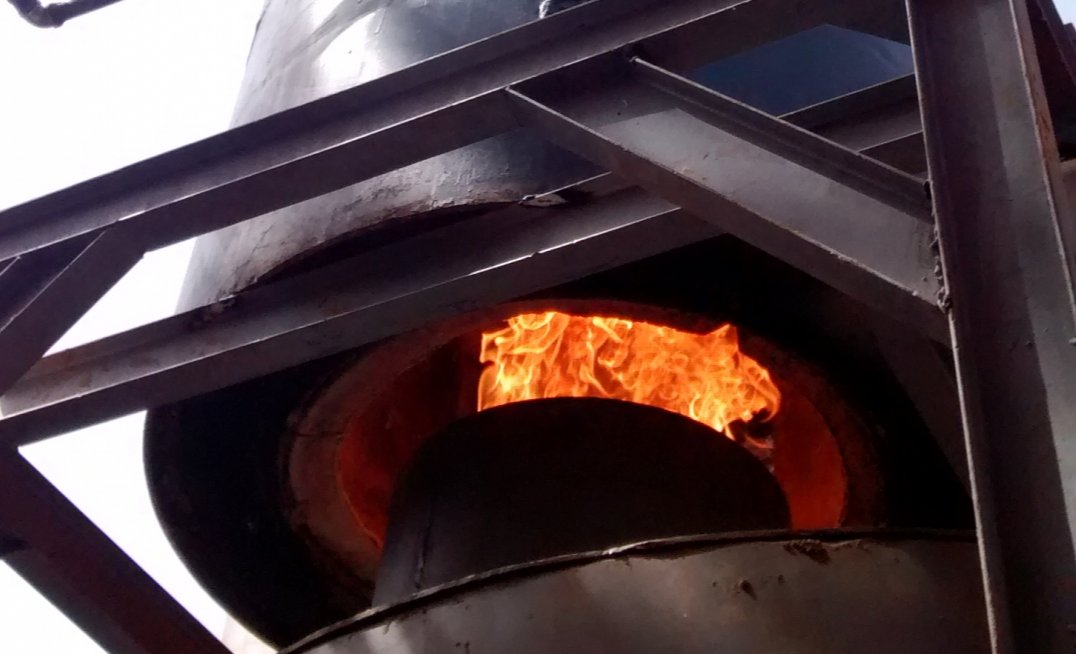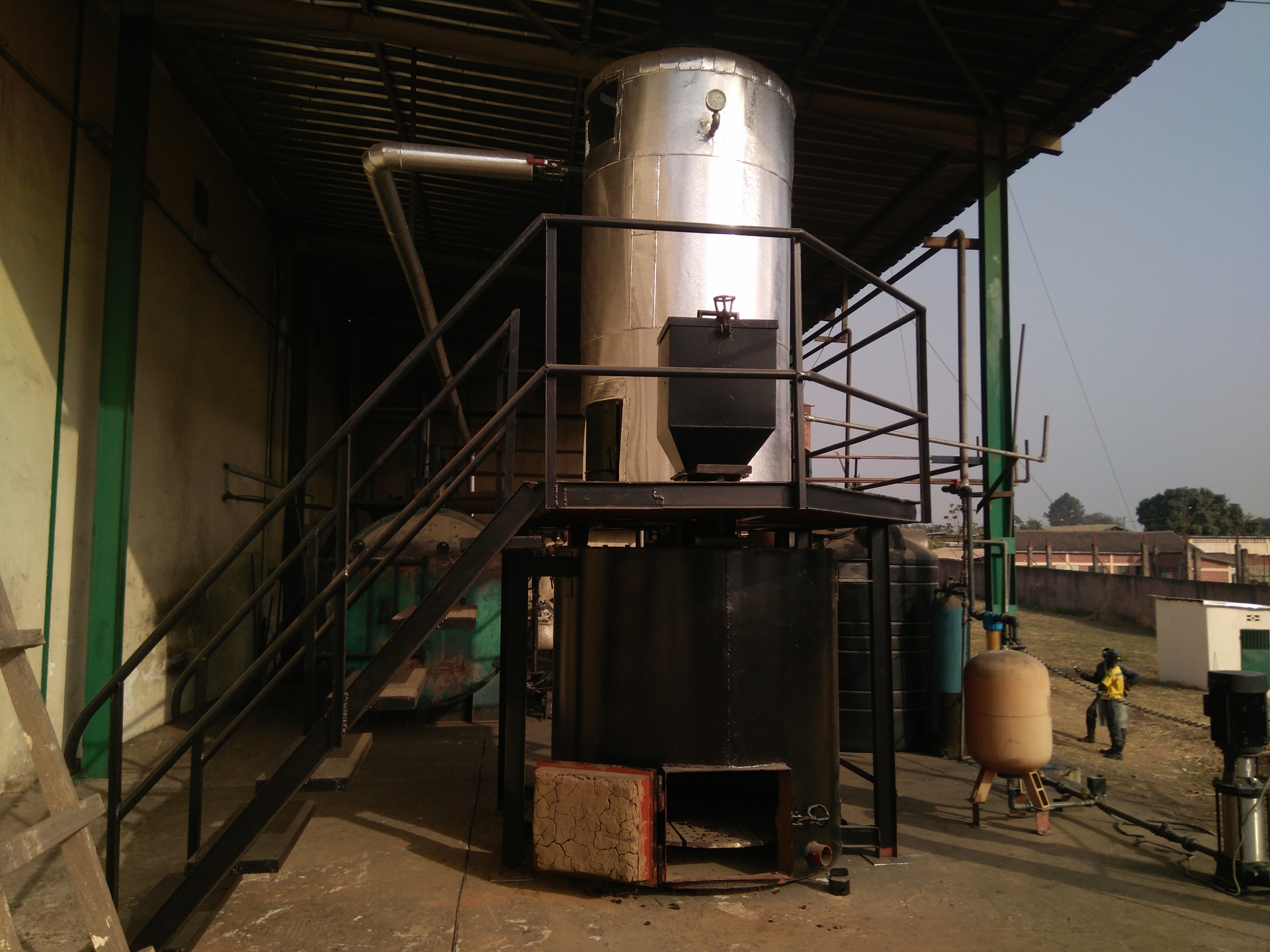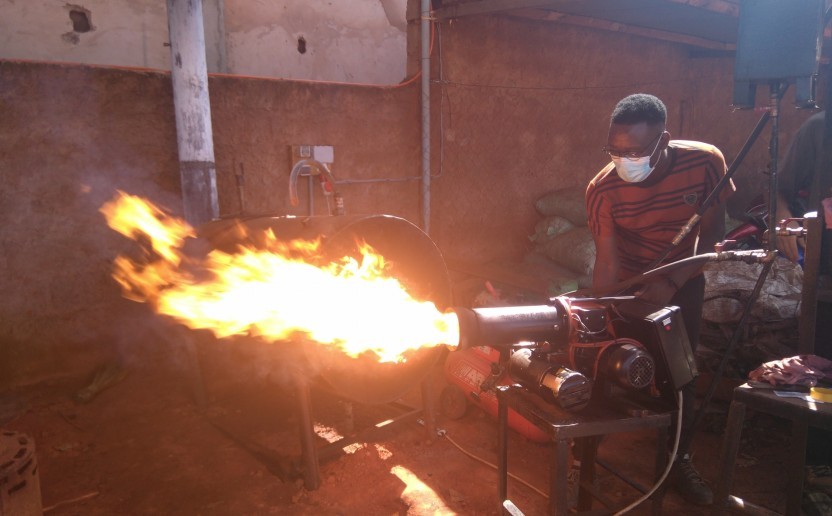

The H2CP pyrolysis oven
Called "H2CP" (High Calorific Cashew Pyrolyser), this technology is based on the operation of a pyrolysis oven connected to the boiler usually used to produce the thermal energy necessary for the various production stages of the processing units (cashew, shea, dried mangoes, etc.). This pyrolysis oven will make it possible to heat the boiler (and therefore to operate the production unit) without using any fuel other than… cashew shells, the main waste from the production of cashew nuts. These residues, untreated, contain an acidic liquid that is dangerous for humans and the environment.
H2CP technology developed by Nitidæ: how does it work?
The shells are simply injected into the very hot environment of the reactor (up to 1000°C). In the absence of oxygen, they turn into biochar and release some of their chemical compounds in the form of pyrolysis gas. These gases are conducted by chimney effect to a combustion chamber located downstream of the furnace: most often, the boiler hearth. By finding oxygen, the gases enter into combustion and produce the thermal energy necessary for the production unit! At the end of the day, the biochar produced can be recovered and used under the same conditions as charcoal.
CAJOUVALOR, Energy recovery from cashew nut shells
A competitive offer that has proven itself in a variety of industrial sectors!
Although the H2CP technology was initially developed for cashew processors wishing to reduce their own shell waste, since its first application as part of the Cajouvalor Project (2011), it has been replicated and adapted many times. Today, it applies to all sectors with thermal energy needs: production of shea butter, drying of mango or ginger, oil mills, non-food industries, etc. It can easily be adapted to serve processes (pyrolysis but also carbonization, production of charcoal briquettes, etc.) and rely on various fuels (cashew shells but also shea cakes, cocoa pods, rice husks, etc. .). The idea is always the same: to use agro-industrial waste to supply clean energy to the manufacturing process.

A boiler installed at Cajou des Savances - CaSa - in Bouaké in January 2021 (capacity of 350 kg.steam/hour)
See the pyrolysis oven brochure here.
The Cajouvalor project received the Suez Initiatives Fund / Institut de France prize in 2016, highlighting the work of our equipment supplier partner ASIS on an international scale. Since then, RONGEAD (now Nitidæ) has taken part in the dissemination of technology and the transfer of associated skills, including outside Burkina Faso: more recently in Côte d'Ivoire, Mali and Senegal. ASIS participates as a trainer of artisan welders who take up this know-how, and who participate in the dissemination of this technology so beneficial for people and the environment.
Agrovalor Platform

